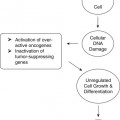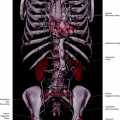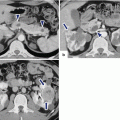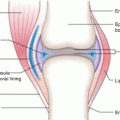© Springer Science+Business Media Dordrecht 2017
Hongjun LI (ed.)Radiology of Parasitic Diseases10.1007/978-94-024-0911-6_44. Pathogenesis of Parasitic Diseases
(1)
The Second Affiliated Hospital, Xinjiang Medical University, Urumqi, Xinjiang Uygur Autonomous Region, China
The pathogenic mechanism of parasitic infection varies according to species and quantity of parasites as well as parasite-hcost adaptation and host responses. The damage caused by parasites can be either confined within the parasitic site or extend into other parts in host. The damages are commonly caused by mechanical pressure, capturing nutrition, toxins, responses and anaphylaxis of host to the stimulation from parasites as well as passage for other pathogens invading the host.
4.1 Mechanical Damage
Mechanical damage refers to the damages or lesions to cells, tissues or organs of the host that are caused by mechanical pressure from parasites during the infection process. For instance, local skin lesions can be caused by invasion of mites or fly larvae into the skin of host. And dermatitis may be caused by penetration of cercariae of schistosoma japonicum into the skin, with local spots of papule and pruritus, which is an immediate and delayed allergic response. Hookworm dermatitis is a common hookworm diseases and the patients experience sensations of needling, burning and itching within dozens of minutes after invasion of hookworm larvae into the skin. Congestive spots and papule may develop thereafter, which may further progress into local redness, swelling and blisters. When such larvae as roundworm and hookworm move and pass through the organs (especially lungs), they may penetrate the pulmonary capillaries to cause vasculitis as well as embolism and rupture of pulmonary capillaries. Therefore, local cell infiltration and spots of hemorrhage may be produced. In some serious cases, pulmonary hemorrhage and edema or even secondary bacterial infection may occur. Especially when the parasites are large in size and quantity, the effects may be extremely dangerous. For instances, in the cases of larvae of echinococcus granulosus parasitizing in human liver, the patients are asymptomatic at first. However, along with their growing bigger in size, they compress liver tissues and other abdominal organs to show symptoms due to obvious compression and stimulation. The disease caused by parasitizing of Echinococcus in human skeleton is known as osteohydatidosis, whose occurrence is commonly found in the pelvis, central vertebra, and metaphysis of long bones. The patients are vulnerable to fracture or osteomiosis due to its destruction to bones.
Large quantity of parasites in the intestinal canal may cause intestinal obstruction. For instance, adult roundworms parasitizing in the intestinal lumen are likely to move into various organs with their opening in the intestinal wall, such as bile duct, pancreatic duct, and appendix, to cause biliary ascariasis, ascaris pancreatitis, and appendicitis.
Stay updated, free articles. Join our Telegram channel

Full access? Get Clinical Tree








